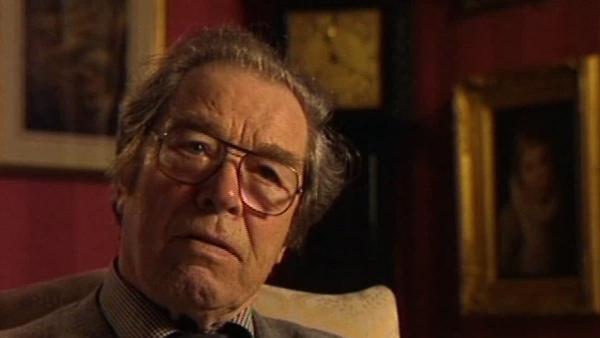NEXT STORY

The difference between lever and co-axial escapement
RELATED STORIES

NEXT STORY

The difference between lever and co-axial escapement
RELATED STORIES


|
Views | Duration | |
|---|---|---|---|
| 41. Each Daniels watch is different | 1 | 1714 | 02:06 |
| 42. Handmade repeater mechanisms | 1621 | 00:51 | |
| 43. I kept some of my best watches to amuse me | 1743 | 03:06 | |
| 44. My struggles to get the Swiss watch industry interested | 2032 | 02:50 | |
| 45. The co-axial escapement was a superlative timekeeper | 1973 | 02:40 | |
| 46. The difference between lever and co-axial escapement | 4585 | 01:46 | |
| 47. Who would produce the co-axial escapement for me? | 1900 | 01:31 | |
| 48. Persuading Omega to take an interest in the co-axial escapement | 1 | 2556 | 05:23 |
| 49. Putting on a show at the Baselworld Fair | 1622 | 00:56 | |
| 50. Patek Philippe produce a poor replica of the co-axial escapement | 2428 | 02:43 |


Of course the principles of escapements are well established. We know what is required of an escapement, but whilst it's easy to understand what's needed, it's not very easy to discover how to make it available. And I think also there's a certain amount of inhibition because one is faced with a 500 year old problem that hasn't been solved and to set about solving it without giving it sufficient consideration wasn't going to produce the results. And I realised that and... Still, I set to work and produced different escapements. It's difficult to describe these escapements, but they included the best-required principles for escapements, with the exception of the tick-tock impulse, and that was the greatest problem to find out how to introduce an impulse to the oscillator at every vibration. And finally, I produced an escapement which I called the co-axial escapement because it had two escape wheels, not side by side as with the earlier watch, but one on top of the other, and this gave the tick-tock impulse and didn't require lubrication. So, as far as I could see, the problem was solved and it only meant putting it to test to find out how it went. And I tested it during a period of 20 years, not because it wanted all that testing, but because I couldn't find anyone in the industry to take an interest in it. But during those 20 years, it proved itself to be a superlative timekeeper and some examples have run for the best part of a year without showing any variation in timekeeping. So obviously it was suited to its task. It didn't need the lubrication so it wasn't affected by a change in temperature.
George Daniels, CBE, DSc, FBHI, FSA (19 August 1926 - 21 October 2011) was an English watchmaker most famous for creating the co-axial escapement. Daniels was one of the few modern watchmakers who could create a complete watch by hand, including the case and dial. He was a former Master of the Clockmakers' Company of London and had been awarded their Gold Medal, a rare honour, as well as the Gold Medal of the British Horological Institute, the Gold Medal of the City of London and the Kullberg Medal of the Stockholm Watchmakers’ Guild.
Title: The co-axial escapement was a superlative timekeeper
Listeners: Roger Smith
Roger Smith was born in 1970 in Bolton, Lancashire. He began training as a watchmaker at the age of 16 at the Manchester School of Horology and in 1989 won the British Horological Institute Bronze Medal. His first hand made watch, made between 1991 and 1998, was inspired by George Daniels' book "Watchmaking" and was created while Smith was working as a self-employed watch repairer and maker. His second was made after he had shown Dr Daniels the first, and in 1998 Daniels invited him to work with him on the creation of the 'Millennium Watches', a series of hand made wrist watches using the Daniels co-axial escapement produced by Omega. Roger Smith now lives and works on the Isle of Man, and is considered the finest watchmaker of his generation.
Tags: escapement, co‑axial escapement, tick-tock impulse
Duration: 2 minutes, 40 seconds
Date story recorded: May 2003
Date story went live: 24 January 2008